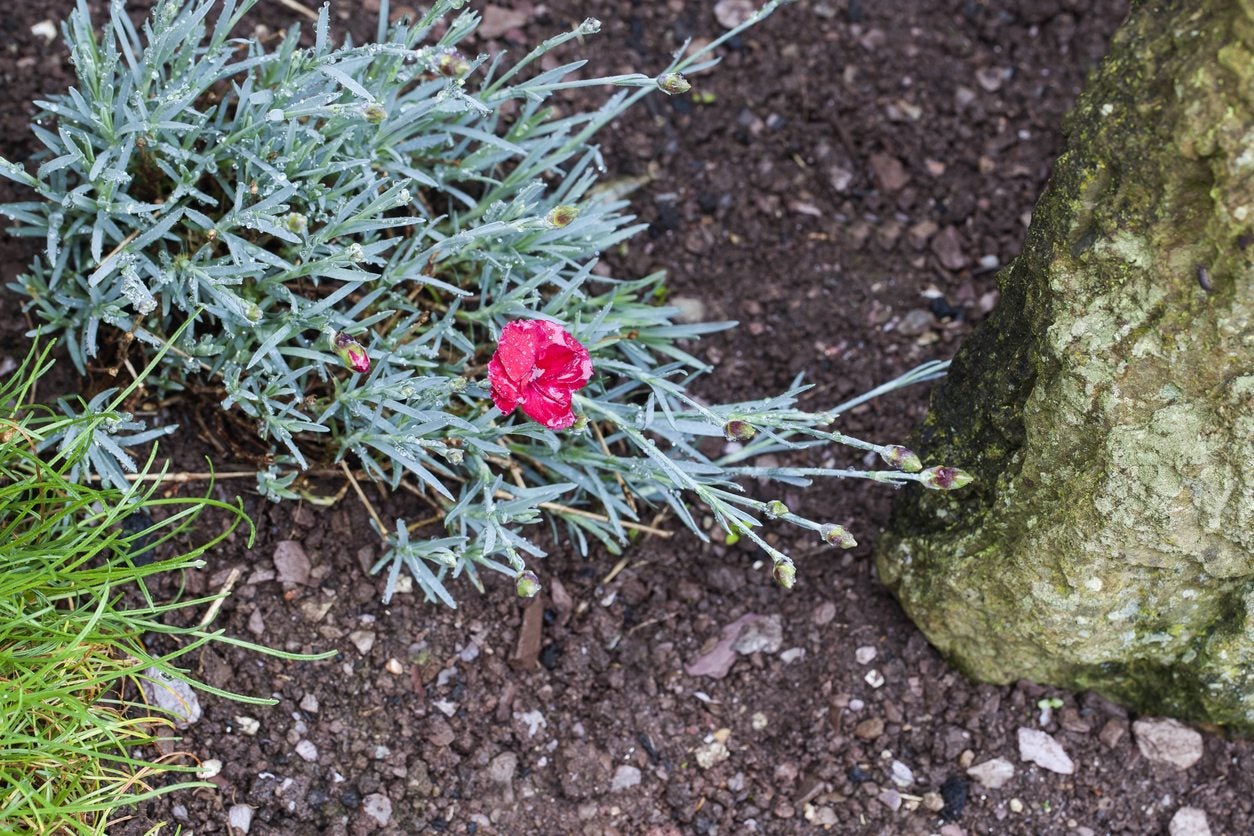Clove Pink Herb Plants – Learn About Clove Pink Uses In The Garden


Clove pink flowers (Dianthus caryophyllus) may arrive in an array of colors, but the term "pinks" actually refers to the Old English, pynken, which is something like pinking shears. It is referencing the notched edges of the leaves on the plant rather than the color. Clove pink herb plants are related to carnations and the recognizable scent of clove is borne on the blooms. These lovely little plants are charming additions to the garden.
What is a Clove Pink Plant?
Gardeners with tiny spaces to fill and sunny locations would do well to try growing clove pink flowers. Not only do the plants have a dense tufted form, but the attractive, heavily scented flowers have a long herbal history – both in medicine and as edible garnish and flavoring. Clove pink herb plants are also tolerant of a wide range of soil situations and marine regions, as well as mildly polluted zones. Hardy and pretty, pinks are a useful solution in many garden dilemmas. Clove pink flowers look like miniature versions of the classic carnation, in the family Dianthus. The lightly frilled edges and soft pastel tones complement a range of other perennial bloomers. Pinks are adaptable to USDA zones 5 to 8 and have a tidy 6 to 9 inch (15-23 cm.) spread with flowers that can rise 20 inches (51 cm.) above the basal mound of foliage. The whole affair looks much like a pincushion, both before and after bloom time. The plant before blooming has an airy texture and orderly arrangement, but once it blooms, it achieves a dense aspect decorated with tiny, scented flowers. Flower colors may be white, red, rose, lavender, yellow, and, of course, pink.
Growing Clove Pink Herb Plants
Plants are easy to establish through division or seed, which should be sown indoors six to eight weeks before the date of the last frost in your area. Dianthus caryophyllus is almost indestructible. It can tolerate drought periods once established, soggy spring weather, and light frosts. These plants are perfect for borders, containers, and even among pavers. The best situations are full sun locations in well-drained soil, but even fertility isn't an issue with these herbs. Pinks can survive in fairly inhospitable soil just fine and will reliably come up year after year. Occasionally, division is necessary, as the center dies out and flower production diminishes. Deadheading can be time-consuming with the tiny flowers, but the process also encourages the plant to continue flowering throughout the growing season.
Clove Pink Uses
Pinks have a long chronicle of uses, both as a decorative plant and as a medicine and culinary herb. In culinary applications, the flower was used candied, as a flavoring in syrups, and even in a liqueur. The key to using the flowers is to remove the white heel, which has a bitter flavor. Once done, the petals add beauty and flavor to salads. Traditional clove pink uses as aromatics are part of the history books. Add the flowers to potpourri, dried as a laundry sachet, or in many cosmetics as a spicy perfume. Medicinally, clove pinks may relieve tension, heartburn, and flatulence. There are even some reports that the plant is good for heart patients and epileptics, but these statements can't be verified without a doctor's reference.
Sign up for the Gardening Know How newsletter today and receive a free copy of our e-book "How to Grow Delicious Tomatoes".

Bonnie Grant is a professional landscaper with a Certification in Urban Gardening. She has been gardening and writing for 15 years. A former professional chef, she has a passion for edible landscaping.